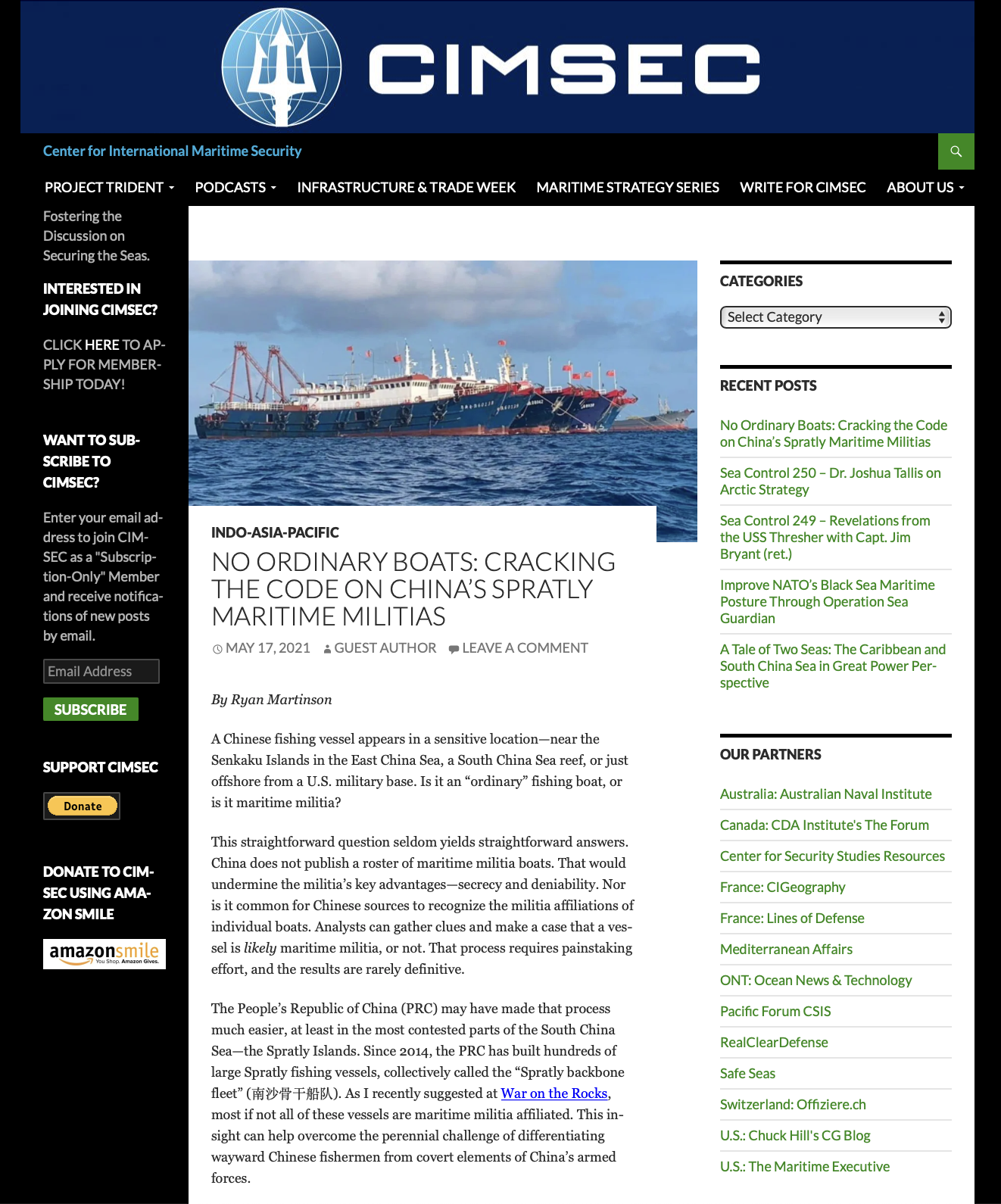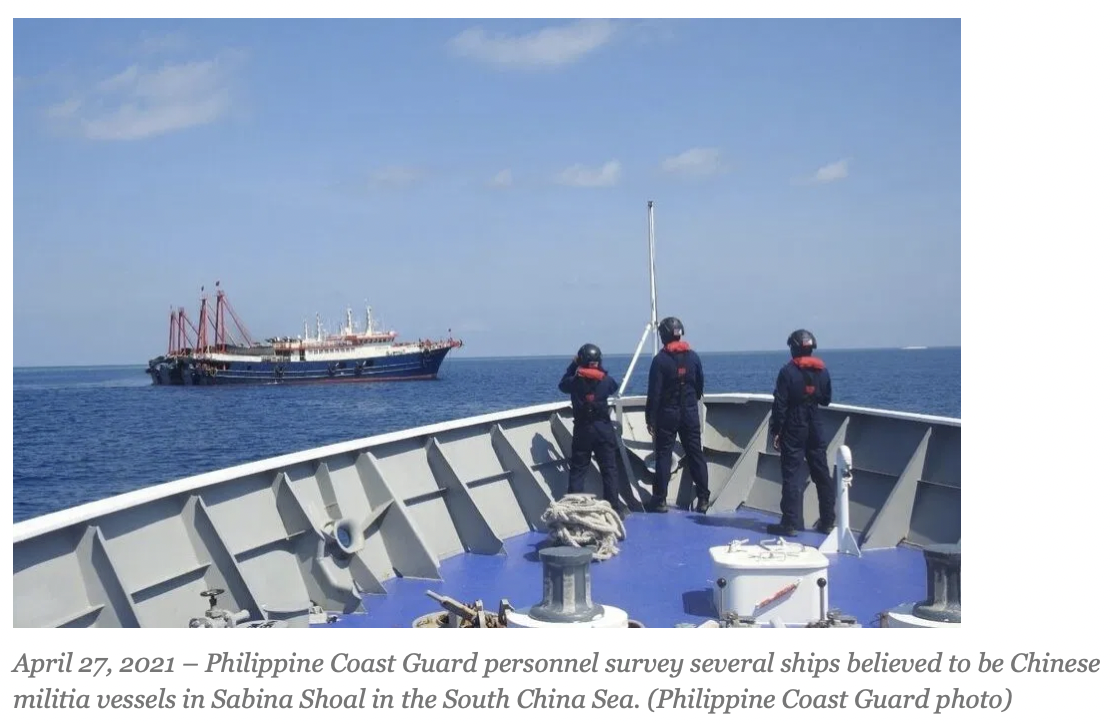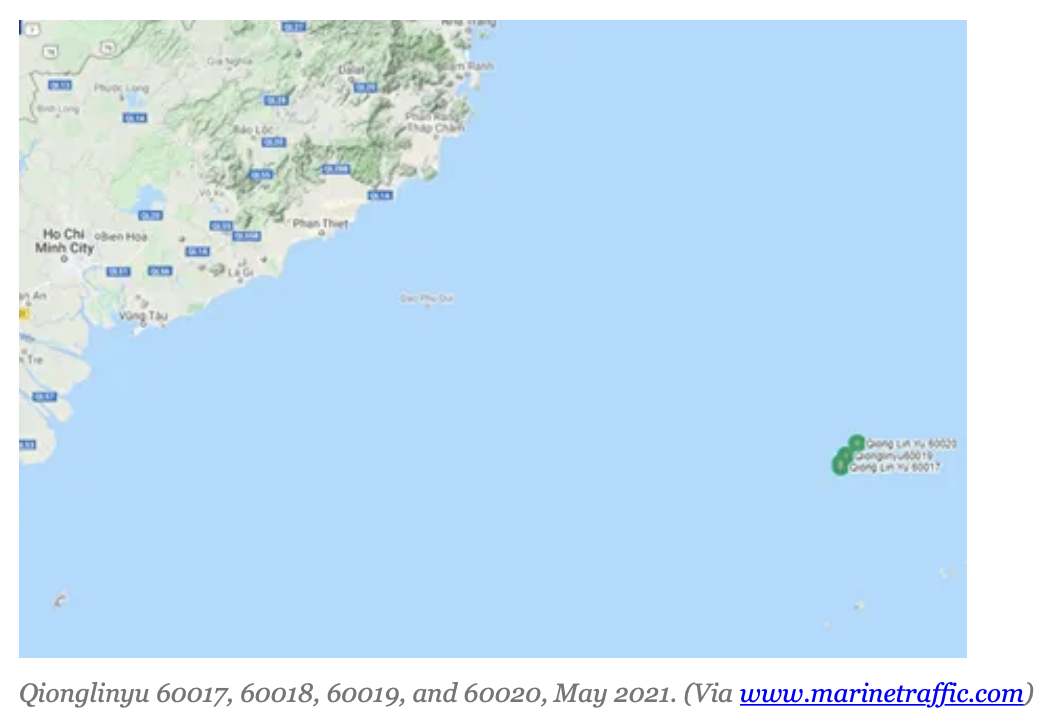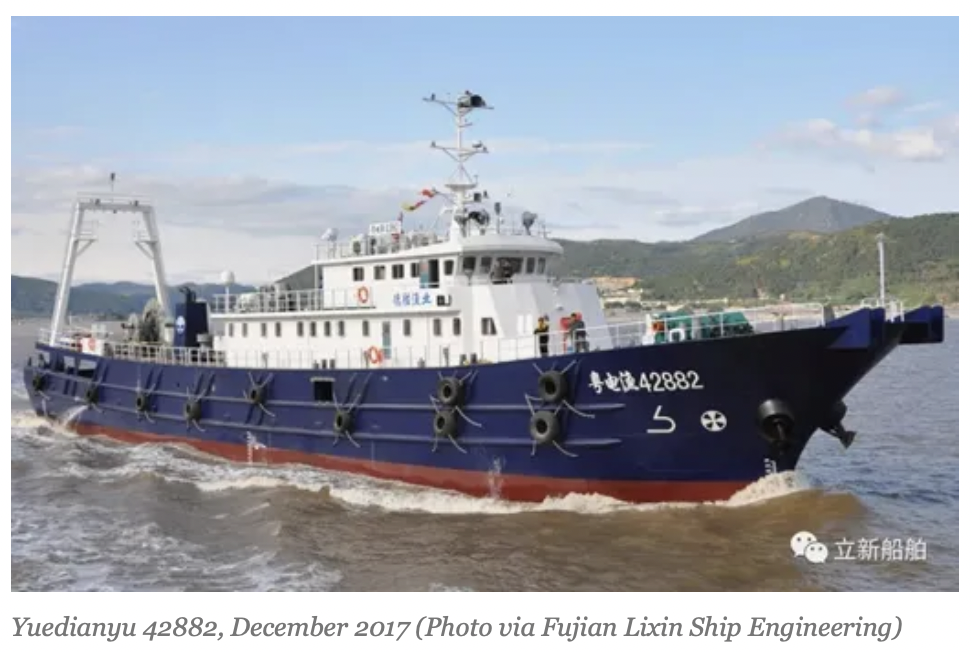No Ordinary Boats: Cracking the Code on China’s Spratly Maritime Militias
China tends to be much more transparent in Chinese. And careful analysis of open sources can reveal important patterns and insights. Looks like my colleague Ryan Martinson just made an revealing discovery indeed!
Ryan D. Martinson, “No Ordinary Boats: Cracking the Code on China’s Spratly Maritime Militias,” Center for International Maritime Security (CIMSEC), 17 May 2021.
A Chinese fishing vessel appears in a sensitive location—near the Senkaku Islands in the East China Sea, a South China Sea reef, or just offshore from a U.S. military base. Is it an “ordinary” fishing boat, or is it maritime militia?
This straightforward question seldom yields straightforward answers. China does not publish a roster of maritime militia boats. That would undermine the militia’s key advantages—secrecy and deniability. Nor is it common for Chinese sources to recognize the militia affiliations of individual boats. Analysts can gather clues and make a case that a vessel is likely maritime militia, or not. That process requires painstaking effort, and the results are rarely definitive.
The People’s Republic of China (PRC) may have made that process much easier, at least in the most contested parts of the South China Sea—the Spratly Islands. Since 2014, the PRC has built hundreds of large Spratly fishing vessels, collectively called the “Spratly backbone fleet” (南沙骨干船队). As I recently suggested at War on the Rocks, most if not all of these vessels are maritime militia affiliated. This insight can help overcome the perennial challenge of differentiating wayward Chinese fishermen from covert elements of China’s armed forces. … … …
Implications
In this article, I have argued that most if not all Spratly backbone boats are militia boats. They may actually catch fish, but their militia affiliation makes them available for state and military tasking. If this conclusion is correct, it offers useful new ways to identify Chinese maritime militia forces operating in the Spratly waters. While the PRC does not publish lists of active maritime militia boats, it does share information about which boats belong to the Spratly backbone fishing fleet. This can serve as an indicator of militia status.
How might this work in practice? At the time of this writing, a team of four Chinese fishing boats is operating illegally within 200 nautical miles of Vietnam’s coast, i.e., within the country’s exclusive economic zone (EEZ). The four vessels are named Qionglinyu60017, 60018, 60019, and 60020, respectively, indicating they are registered to Hainan’s Lingao county (临高县). Vietnamese maritime law enforcement authorities could evict them, but before doing so they might ask, are they maritime militia?
My answer: “very likely.” A quick sifting of open-source materials reveals they are all backbone boats. This information appears in a March 2020 open letter posted on the website “Message Board for Leaders” (领导留言板). In it, the boat owners entreat PRC officials to restore fuel subsidies and other rewards for operating in “specially-designated waters” in 2018. Likely amounting to hundreds of thousands of RMB, the subsidies were withheld as punishment for operating in the Spratlys without the required licenses. To elicit special consideration, they emphasized that their four vessels were Spratly backbone boats. (Their ploy ultimately failed, as the Lingao County Bureau of Agriculture responded to their letter with a firm but polite refusal to change their decision.)
Southeast Asian countries can and should compile lists of known Spratly backbone boats. They can start with local newspapers, which are a great source for such information. In December 2016, for example, Zhanjiang Daily published an article about the launching of the city’s first Spratly backbone trawlers: the 48-meter (577 ton) Yuemayu 60222 and 60333. Registered to the city’s Mazhang District, the craft are owned by Zhanjiang Xixiang Fisheries (湛江喜翔渔业有限公司). With these clues in hand, one can then try to learn the identities of the company’s two other Spratly backbone boats, then still under construction.
The websites of Chinese shipbuilding companies are another useful source of information. Those with contracts to build backbone boats often issue news releases when these vessels are launched or delivered. In October 2017, for instance, the Fujian-based Lixin Ship Engineering Company launched five very large Spratly backbone trawlers built for a Guangdong fishing company, Maoming City Desheng Fisheries Limited. The five boats were delivered two months later. They included Yuedianyu 42881, 42882, 42883, 42885, and 42886. The boats were 63.6 meters in length and had the large (1244kW) engines typical of the backbone fleet. Of note, Desheng Fisheries is the same company that owns Yuemaobinyu42881, 42882, 42883, 42885, and 42886, all spotted moored at Whitsun Reef in March. Indeed, they may be the very same boats (their names having been slightly altered in the years since they were built).
Provincial and municipal governments may be the most valuable sources of all. In November 2020, the Guangdong Bureau of Agriculture and Rural Affairs released information about the province’s Spratly (“NS,” for nansha) fishing license quota for 2021. The document indicated that 255 Guangdong boats would receive Spratly fishing licenses this year, among which 185 would go to backbone boats and 70 would go to “ordinary boats” (普通渔船). The Bureau attached an Excel spreadsheet listing the chosen vessels. The document omitted Table 1, containing the list of backbone boats. But it did include Table 2, listing the 70 “ordinary” fishing boats. Since only two types of Guangdong boats operate in the Spratlys—i.e., ordinary and backbone—any Guangdong boat there and not found in Table 2 must be a backbone bone, and therefore presumed militia.
These data help shed light on recent events. In March and April 2021, the Philippine Coast Guard released photos of Chinese fishing boats loitering at Whitsun Reef. Thanks to the Asia Maritime Transparency Initiative (AMTI), we know the identities of 23 of them.
Both AMTI and the Philippines Coast Guard classified them as “militia.” They are right. All are from Guangdong. All are absent from Table 2. And that makes them no “ordinary” boats.









































